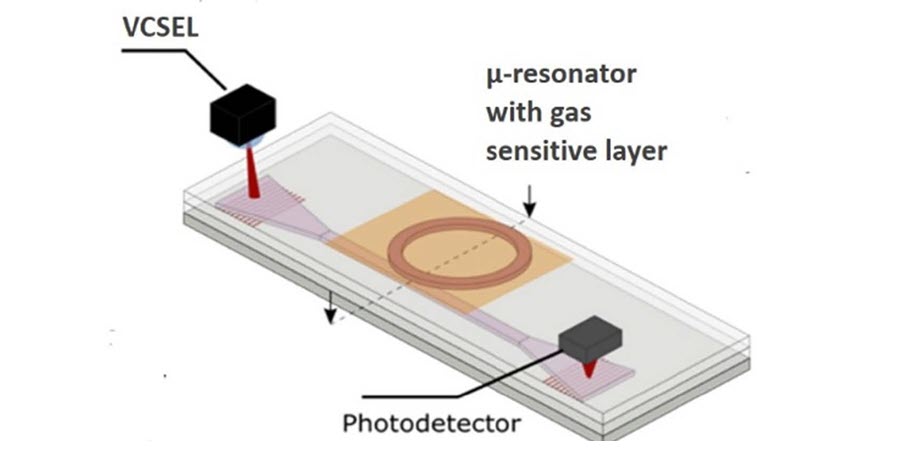Researchers from the University of Toulouse have developed a method to fabricate a microlens that could enable more effective portable gas sensing technologies. The researchers used two-photon-polymerization 3D printing to fabricate a microlens that could enable vertical cavity surface emitting lasers (VCSELs) for use in ammonia gas detection.
The work demonstrates the potential of two-photon polymerization as a fast and accurate technique for VCSEL collimation at a post-mounting stage. In addition, the researchers said that it paves the way toward the development of optimized laser chips directly integrable in portable optical sensing systems.
Portable gas sensors are in high demand for environmental, health sciences, and industrial use. Resonant optical sensors, particularly planar microresonators, combine high sensitivity and a small footprint, making them suitable candidates for these applications. The sensing principle is based on a variation in their spectral response in the presence of the target molecules. The laser source to be used for probing such spectral shifts should emit a single-mode and polarization-stable beam and should be spectrally tunable over at least a few nanometers.

The gas sensing microsystem is based on a low-cost polymer microresonator and uses a VCSEL as a probing source. The developers used two-photon-polymerization 3D printing to fabricate the core optic used in the system, which enables the portable mechanism to use the compact light source. Courtesy of Journal of Optical Microsystems.
The Toulouse researchers favored a near-infrared single-mode laser diode source — a VCSEL — for their microsystem; these semiconductor lasers benefit from their compact size and can be spectrally tuned over a few nanometers simply by adjusting the operating current. The VCSEL chip used in their work also includes a grating relief etched at its surface. This ensures strong polarization stability of the emitted beam.
However, although it is smaller than an LED or a standard edge-emitting laser diode, the beam divergence of this VCSEL chip is too large for most practical uses in optical microsystems. In this research, the spot size at the aimed working distance (2 mm) is indeed larger than 250 µm. It must be reduced to less than 100 µm to ensure an optimal coupling with the detection area. Polarization-stable single-mode VCSEL chips with a reduced divergence are unfortunately not yet commercially available. The researchers needed an accurate method to directly integrate a collimation microlens on a small-size VCSEL chip that is already mounted on a printed circuit board.
The use of two-photon-polymerization 3D printing allowed the researchers to fabricate such a microlens in a single step in a writing time of just 5 min. To this aim, they optimized the lens design and fabrication conditions to obtain a sufficient surface quality as well as a suitable focal length. The beam divergence of the laser chip could be reduced from 14.4° to 3°, corresponding to a beam spot size of only 55 µm at a distance of 2 mm.
As part of the work, the researchers also studied experimentally and theoretically the effects of lens addition on the device’s spectral properties. They proposed a new design to avoid a reduction of the tuning range.
The research was published in Journal of Optical Microsystems (www.doi.org/10.1117/1.JOM.3.3.033501).